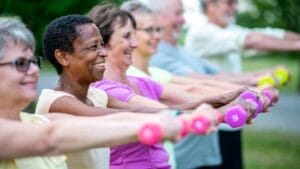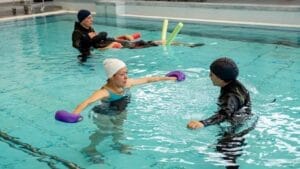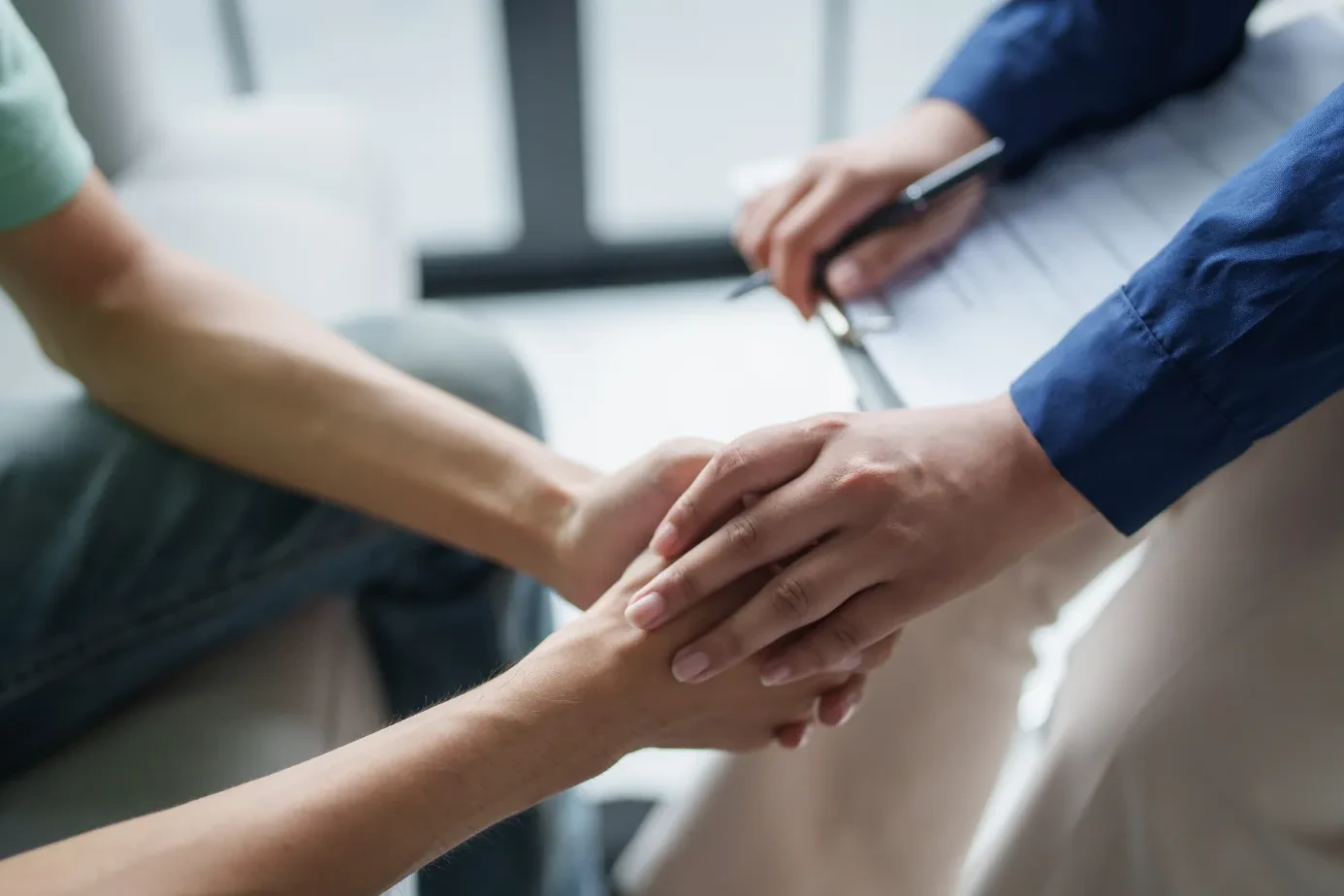Hereditary spastic paraplegia (HSP) can make even simple movements feel like a battle. With legs that grow stiff and heavy, every step becomes a struggle. If you’re living with HSP, you may feel isolated, misunderstood, and unsure of where to turn.
But with the right care plan and expert-guided movement, life can improve. Hereditary spastic paraplegia physical therapy isn’t just about exercise; it’s about reclaiming strength, purpose, and daily freedom.
In this blog, we’ll explain how hereditary spastic paraplegia physical therapy can help you or your loved one manage symptoms, stay mobile, and live well.
Table of Contents
ToggleWhat is Hereditary Spastic Paraplegia?
Hereditary spastic paraplegia is a rare, inherited neurological condition that affects the upper motor neurons, nerve cells responsible for controlling voluntary muscle movement.
It affects the spinal cord. People with HSP often experience stiffness and weakness in their legs, which can slowly get worse over time.
A Brief Medical Overview
HSP is a group of inherited disorders, not just one disease. It causes spasticity, which means tight, stiff muscles, in the lower half of the body.
- There are two main types:
- Pure HSP: Only leg stiffness and weakness.
- Complex HSP: Includes additional symptoms like vision or hearing problems.
- Onset varies: most cases start in childhood or early adulthood, but it can show up later.
What Causes HSP?
The root cause of HSP lies in your genes. Mutations damage the nerves that carry messages between the brain and muscles.
- Common genes involved: SPG4 (most frequent), SPG3A, and others.
- Inheritance can be:
- Autosomal dominant: One parent passes it on.
- Autosomal recessive: Both parents carry the gene.
Common Symptoms of HSP
Symptoms vary by person and type, but here are the most common signs:
- Tight leg muscles (spasticity)
- Weakness in lower limbs
- Trouble with balance and walking
- Fatigue during movement
Prevalence: Around 1 in 100,000 people globally live with HSP.
What is Hereditary Spastic Paraplegia Physical Therapy?
The goal of hereditary spastic paraplegia physical therapy is not just symptom control it’s functional recovery. Here’s how it helps:
1. Improves Mobility and Flexibility

Tightness in muscles limits movement. Stretching and targeted mobility exercises is a hereditary spastic paraplegia physical therapy.
It helps reduce stiffness, maintain joint range of motion, and delay the progression of mobility limitations.
2. Increases Strength and Balance

Stronger muscles improve stability and reduce fatigue. Focus on core and leg muscles.
- Practice sit-to-stand drills
- Do step-ups on stairs or platforms
- Strengthen glutes and thighs with resistance bands
This supports better control over lower limb spasticity.
3. Enhances Independence and Mental Well-being

When you move better, you live better. Being able to dress, walk, or even stand up from a chair without help restores a sense of self-reliance. This significantly boosts mental and emotional health too.
Key Physical Therapy Techniques for HSP
Hereditary spastic paraplegia physical therapy isn’t one-size-fits-all. A trained physiotherapist will design a personalized plan, but common techniques include
1. Stretching and Flexibility Exercises

Stiff muscles make moving harder. Daily stretching can reduce pain and help with walking.
- Stretch hamstrings and calves daily
- Use resistance bands to support the stretch
- Try Proprioceptive Neuromuscular Facilitation (PNF) stretching with a therapist
Stretching helps reduce muscle contracture management problems.
2. Gait Training and Assistive Devices

Walking can become harder due to leg stiffness. Gait training improves how you walk.
- Practice walking using canes, walkers, or bars
- Use treadmills with support harnesses
- Try aquatic therapy to reduce joint stress
Gait therapy is a big part of hereditary spastic paraplegia physical therapy and for neurological disorders.
Devices like ankle-foot orthoses (AFOs), canes, and walkers are sometimes prescribed to support safe movement.
3. Strength Training

Stronger muscles improve stability and reduce fatigue. Focus on core and leg muscles.
- Practice sit-to-stand drills
- Do step-ups on stairs or platforms
- Strengthen glutes and thighs with resistance bands
This hereditary spastic paraplegia physical therapy supports better control over lower limb spasticity.
4. Aerobic Conditioning

Activities like cycling, swimming, or walking on a treadmill improve cardiovascular health and endurance, both essential for daily functioning.
5. Aquatic Therapy (Hydrotherapy)

Water reduces pressure on joints and supports weak muscles. Warm water also relaxes spastic muscles, making movement easier and less painful.
Use of Technology and Adaptive Equipment
New tools can make therapy even more effective.
| Technology | Function |
|---|---|
| FES (Functional Electrical Stimulation) | Sends small electric pulses to activate muscles |
| Robotic exoskeletons | Helps with walking for those with severe weakness |
| Virtual Reality labs | Simulates safe walking environments |
Stat: In clinical trials, FES increased walking speed by 20% in neurological conditions.
Personalized Therapy Plans: One Size Doesn’t Fit All
Every person with HSP presents differently. That’s why therapy must be tailored :
- Initial assessment involves checking range of motion, muscle tone, balance, and walking style.
- A personalized plan is then created, combining exercises that fit the individual’s needs and comfort.
- Progress tracking ensures that exercises evolve with your strength and ability.
Remember: consistency is more important than intensity. Doing the right exercises regularly makes a long-term difference.
Complementary Therapies to Maximize Results
Physical therapy works best when combined with other support therapies.
Occupational Therapy (OT)
Helps people stay independent in daily tasks.
- Learn safe ways to dress, cook, or bathe
- Use adaptive tools like grab bars and special utensils
- Improve arm strength and coordination
This is core to hereditary spastic paraplegia rehabilitation.
Speech and Respiratory Therapy (for Complex HSP)
For those with breathing or talking problems:
- Teach proper breathing techniques
- Strengthen vocal cords
- Prevent lung infections with better breath control
Nutrition & Anti-inflammatory Diets
Diet impacts how you feel and move. Certain foods help nerve health.
- Omega-3s from fish or flax seeds
- Vitamin D, B12, Magnesium
- Reduce processed foods to lower inflammation
Stat: A study in MS patients showed anti-inflammatory diets reduced fatigue by 30%.
Emerging Therapies That Offer Hope
The world of neurological rehabilitation is evolving. While physical therapy remains essential, these emerging therapies may further enhance outcomes:
Transcranial Magnetic Stimulation (TMS)
This non-invasive brain stimulation technique targets motor cortex areas to improve coordination and reduce spasticity.
Transspinal Direct Current Stimulation (tsDCS)
A mild electric current is applied over the spinal cord to modulate signals and ease muscle tightness.
Virtual Reality and Exergaming
Gamified rehabilitation boosts motivation and engagement. VR exercises improve balance, reaction time, and movement patterns in a fun, interactive way.
These therapies are still under clinical investigation but offer promising results for future HSP management.
A Team Effort: Multidisciplinary Approach to HSP
Managing hereditary spastic paraplegia is not the job of one person—it requires a team :
- Neurologists to monitor disease progression.
- Physical therapists to focus on movement and mobility.
- Occupational therapists to improve day-to-day activities.
- Mental health professionals to address anxiety, depression, or coping issues.
- Caregivers and family to offer support, encouragement, and companionship.
Together, they form a holistic safety net that empowers the patient to live a meaningful life.
Emotional and Psychological Support Matters Too
HSP is a chronic condition. That means frustration, sadness, or even isolation can creep in. Support groups, counselling, and open communication with your care team can make a big difference.
A motivated mind fuels a stronger body.
Dr. Chugh’s Final Words: Movement is Medicine
If you or your loved one lives with HSP, know this, movement is still possible. Progress is still possible. A better life is possible.
Hereditary spastic paraplegia physical therapy is not a miracle cure, but it’s the closest thing we have to one. With the right plan, consistent effort, and expert guidance, your body can do more than you expect.
Book a consultation with me, Dr. Chandril Chugh, and let’s design a therapy plan that works for you. Together, we’ll keep you moving forward.
Frequently Asked Questions
What is hereditary spastic paraplegia?
It’s a group of genetic disorders that cause progressive leg stiffness, weakness, and walking difficulties due to damage to upper motor neurons.
How does physical therapy help HSP?
It improves flexibility, muscle strength, coordination, and mobility. It also helps maintain independence and quality of life.
What techniques are commonly used in HSP therapy?
Stretching, strengthening, gait training, aquatic therapy, and aerobic conditioning.
Can therapy plans be personalized?
Absolutely. Every plan is tailored to your current ability, goals, and lifestyle.
Are there new therapies for HSP?
Yes. Techniques like transcranial magnetic stimulation and VR-based rehabilitation show promising results in early studies.
Why is a multidisciplinary team important?
Because HSP affects physical, emotional, and psychological health. Having a well-rounded care team ensures every aspect is managed effectively.
About The Author

This article is medically reviewed by Dr. Chandril Chugh, Board-Certified Neurologist, providing expert insights and reliable health information.
Dr. Chandril Chugh is a U.S.-trained neurologist with over a decade of experience. Known for his compassionate care, he specializes in treating neurological conditions such as migraines, epilepsy, and Parkinson’s disease. Dr. Chugh is highly regarded for his patient-centered approach and dedication to providing personalized care.
→ Book a consultation to discover which remedies suit your needs best.




